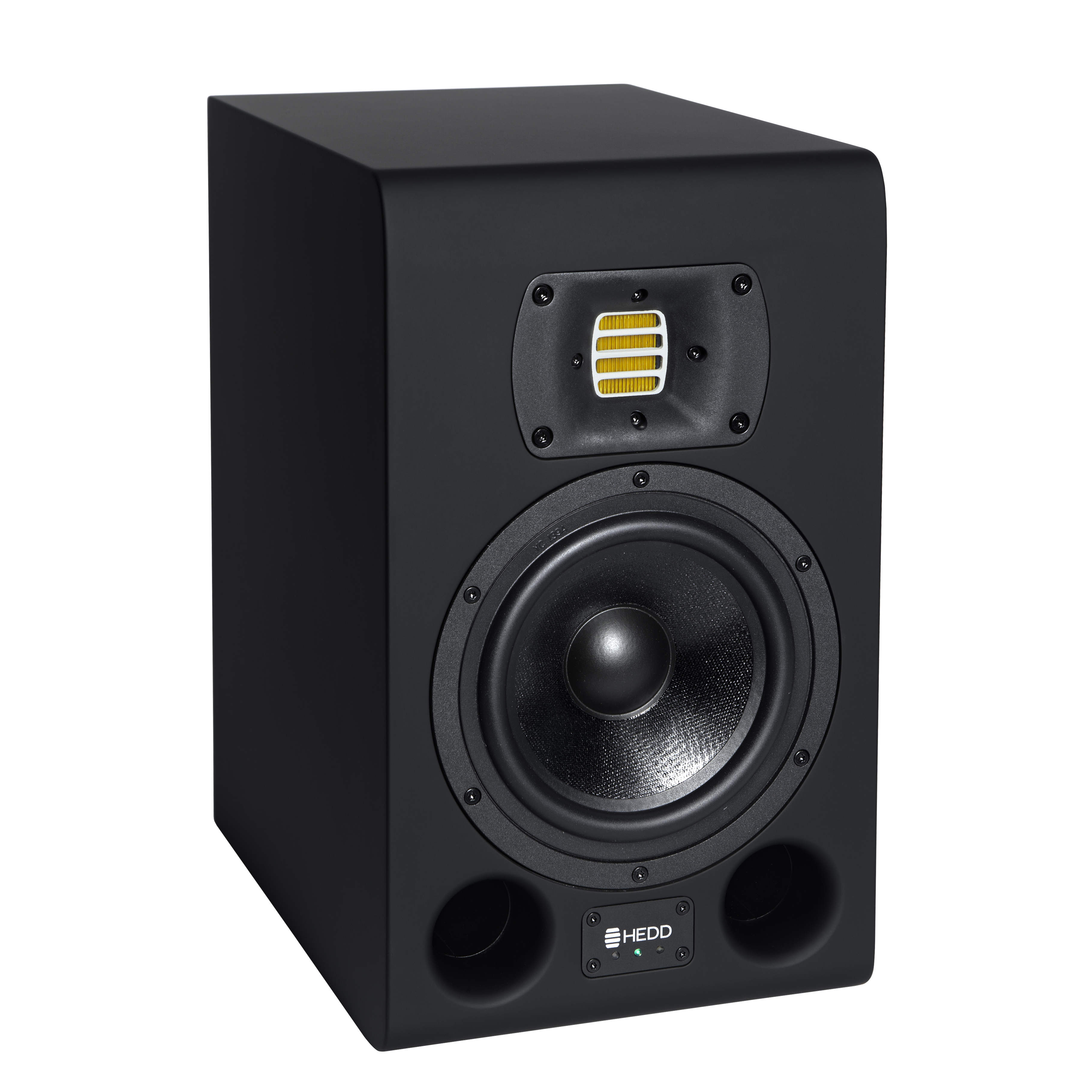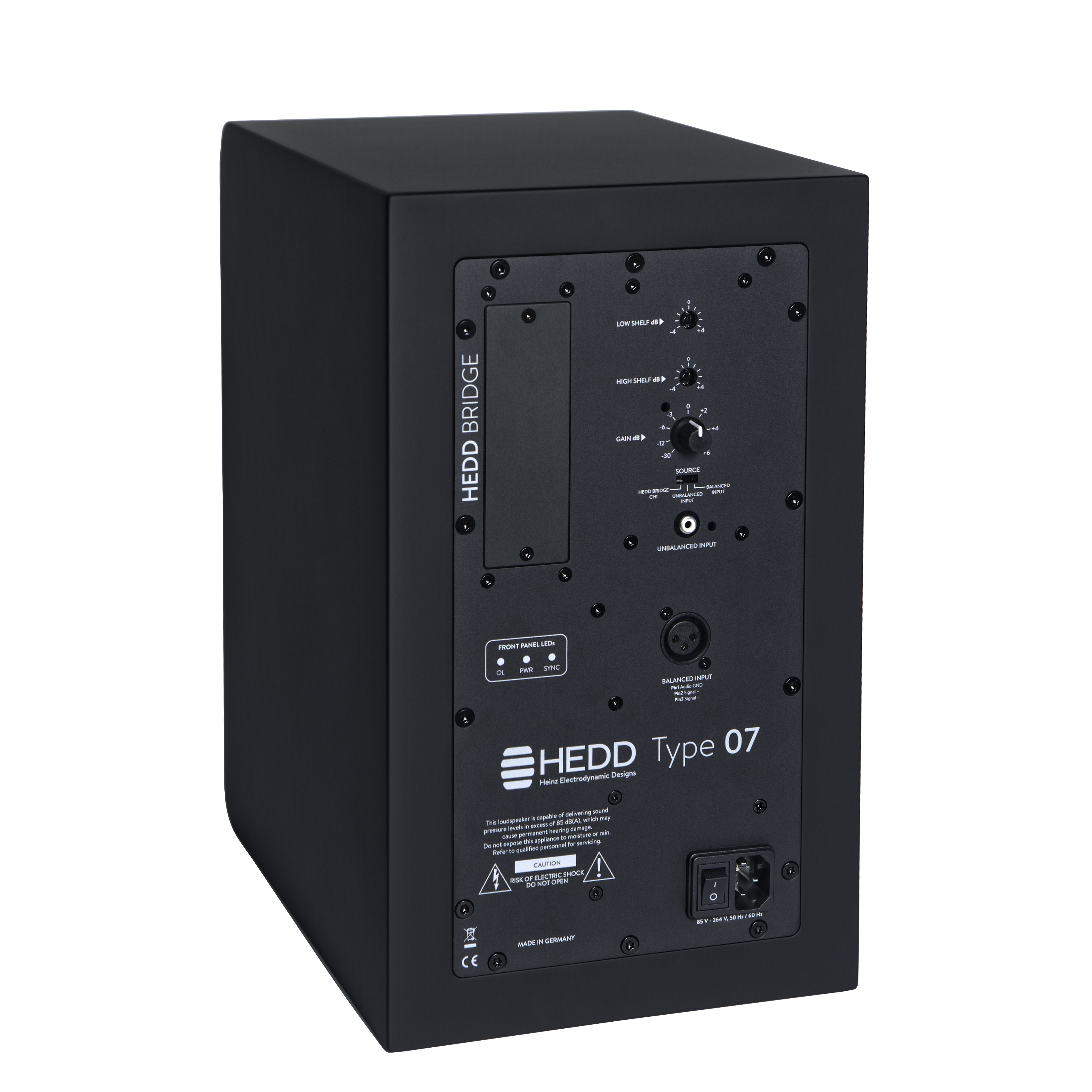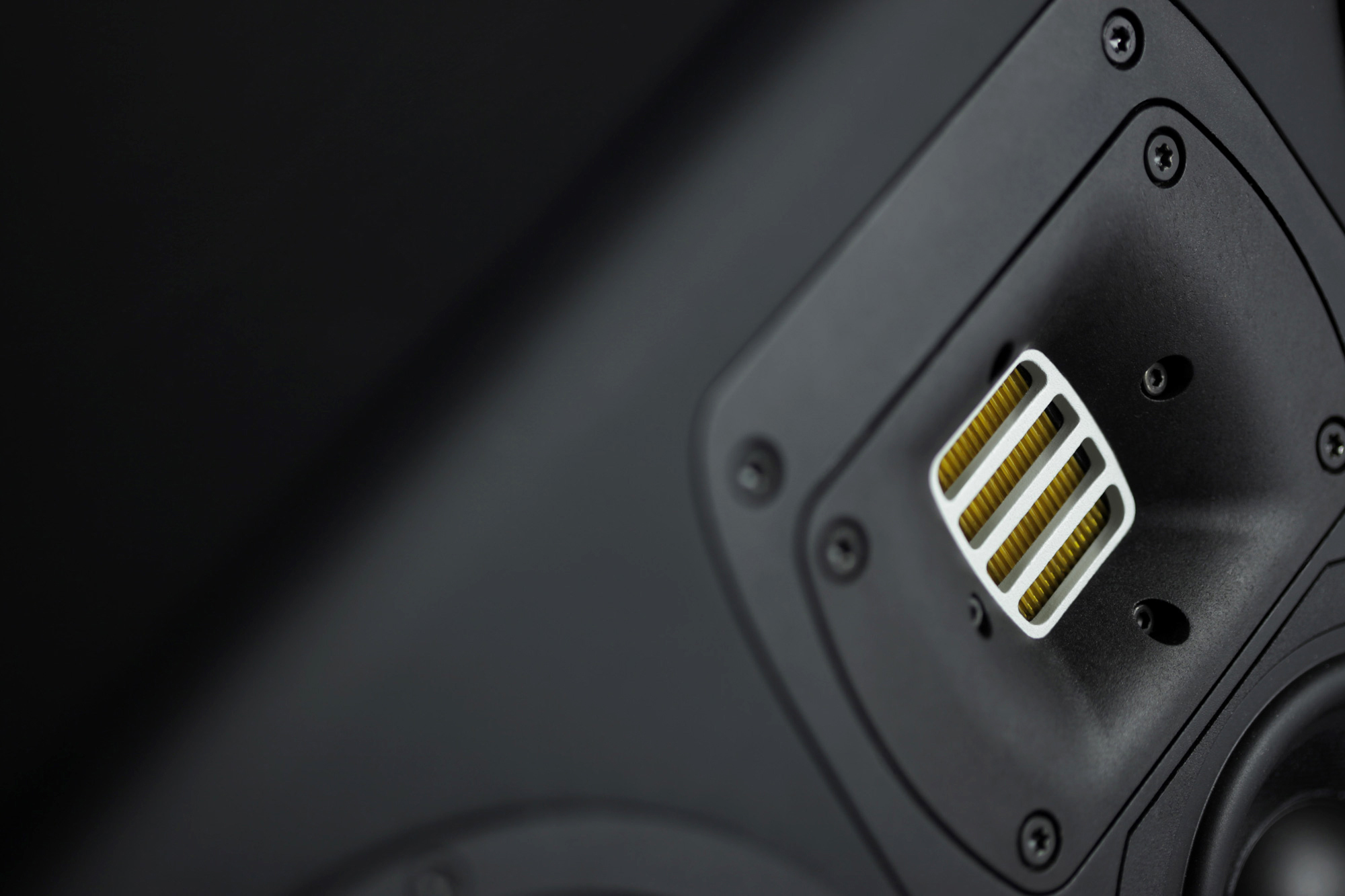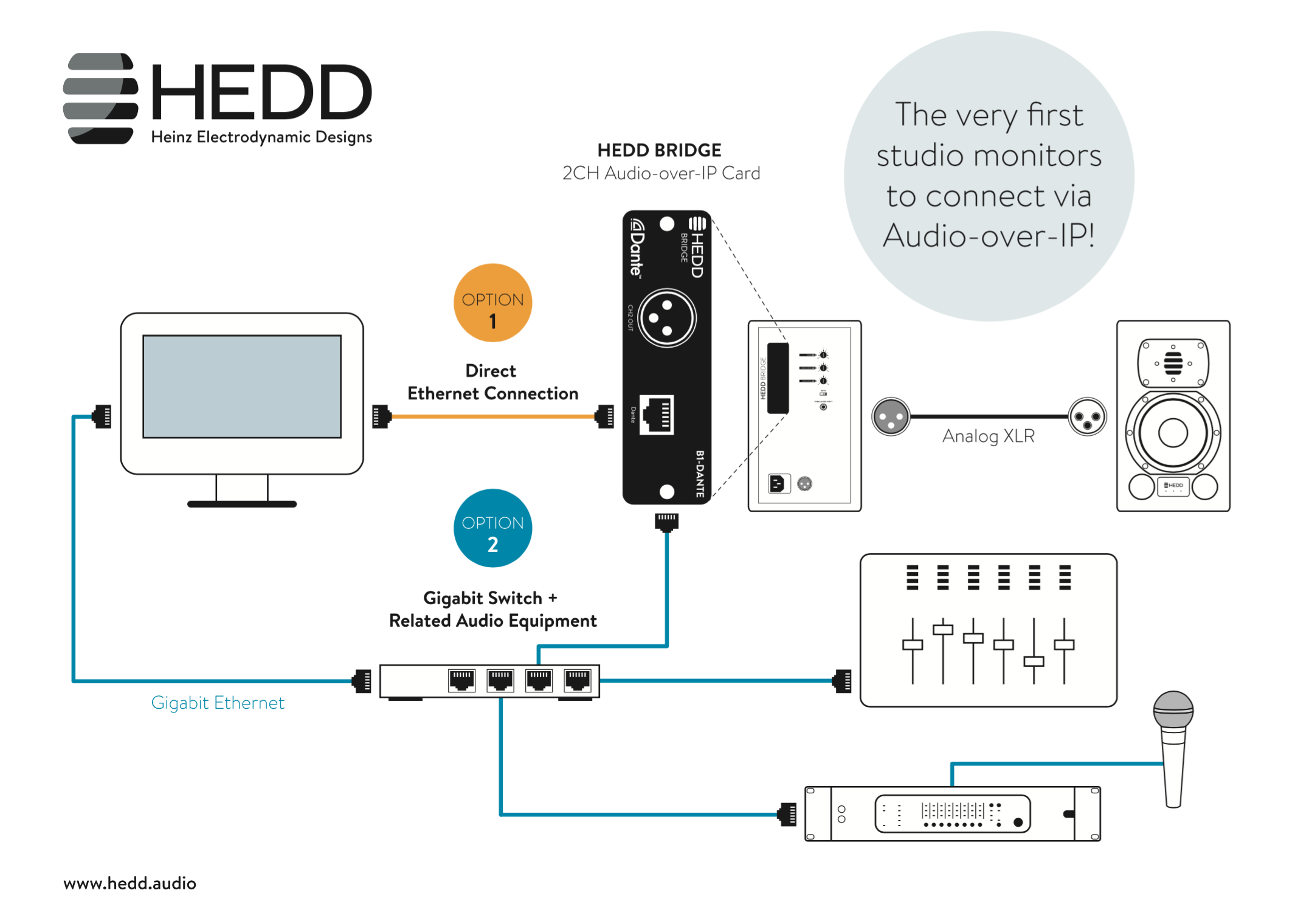XLR8R Review: HEDD Type07 Studio Monitors
XLR8R takes a closer look at HEDD's versatile Type07 studio monitors.

There is a new player in the field of studio monitoring: Heinz Electrodynamic Designs, or HEDD. Klaus Heinz—a physicist known for his work in founding the highly regarded Berlin-based speaker manufacturer ADAM Audio GmbH—founded HEDD in 2015, and the first models were presented at Namm music fair in early 2016. HEDD enters the market with three models: the 5-inch Type 05; the 7-inch Type07—both perfectly fitted for home studio use—and the Midfield type 30, aimed at professional studio environments. We take a closer look at the versatile Type07.
There are several reasons why semi-professional 7-inch speakers are so popular within home studio environments: not only are they normally compact enough to fit into your bedroom, but they also have, pretty much, a full range sound spectrum—without the need for an additional subwoofer—and can be found at reasonably affordable prices. 5-inch speakers often lack response in the frequency range that is crucial for club music, there are 7-inch bass reflex speakers available that do a pretty good job in telling it like it really is. But just how good is the Type07, in this regard?
How does it look?
The HEDD Type 07 is much like ADAM Audio’s much praised 7-inch studio monitor, the A7 or A7X—even though the HEDD Type07s are slightly bigger and the outside of the unibody-like caging has a rubbery, matte touch. The basic design is also similar: there are two bass reflex ports on the bottom end of the speaker, a mounted 7-inch woofer, and the familiar yellow ribbon tweeter. One notable difference, however—an improvement, in fact—is the special waveguide in which the tweeter is placed, intended to lower crossover frequencies and thus improve the sound reproduction of the midrange.



How does it work?
The speaker is equipped with a balanced XLR input and an unbalanced RCA input on the rear of the speaker. HEDD also offers a possibility for digital connectivity via the innovative HEDD Bridge Port—this allows you to use these high-end fully-analog studio monitors within a digital working space; for example, using ethernet-based systems such as Dante and Ravenna. See below for more information.
There is a low shelf filter (± 2dB at 200Hz // ± 4dB at 50Hz) and a high shelf filter (± 2dB at 5kHz // ± 4dB at 20kHz) to make small adjustments to the output signal and to compensate for some reflections of the room. The two filters are useful but it’s important to note that they will not resolve poor room acoustics. If your room emphases low/high frequencies, you can correct that with these filters—so it will compensate to a certain extent—but this does not suffice to even out your frequency response.
HEDD Bridge Port—Analog Studio Monitors with Digital Minds
Looking into the future of professional audio connectivity, HEDD has introduced the Bridge Port Slot. In combination with one of the available Bridge Ports—which must be purchased separately—the user can link these fully analog speakers to digital protocols such as Dante.
Several different Bridge Ports can be purchased, each of them aimed at different digital protocol. The best-known example of which is ‘Audio-over-IP’; IP being short for Internet Protocol, in which networks can be used to transmit audio signals.
An everyday example of software that uses of ‘Audio over IP’ is Skype, but it’s known that the audio quality is often poor. Requirements for professional audio applications are obviously different: they require no signal compression, low latency, and a stable network. The last few years have seen major developments in this field within the professional audio world and, as a result, these requirements can finally now be realized. HEDD is the first manufacturer to introduce this technology to the consumer market.
There are numerous possible applications using this technique, such as connecting multiple monitors through a single dedicated router. Say goodbye to the biggest of studio annoyances: cable spaghetti. This might not be relevant (yet) for most home studios, but it is definitely the next step in the evolution of effective connectivity for concert halls, professional studios, and live venues.

The Sound
On its website, HEDD promises “nearly linear frequency response and an outstanding signal fidelity” due to matched analog components and filters—a hard promise to live up to for 7-inch bass reflex speakers. From the outset, it’s evident that years of experience in the professional audio world have led to this product; it’s clear that we are not dealing with a faceless company that produces its products overseas, but with a man and his son on a mission to design, improve, and get closer to the ideal speaker while keeping it somewhat affordable.
As far as one can hear without extensively measuring the frequency response and room acoustics, the speakers sound relatively transparent and are soft to the ear—a quality that is often overlooked but all the more relevant when you are making 10-hour studio days. Some studio monitors get really sharp in the mid-high and high frequencies, making it exhausting to work with for long periods. Take, for example, the KRK Rokit series: the sharp highs sometimes give you the feeling that your eardrum is being scarred with tiny razors.
Actually, the HEDD Type07 monitors almost sound too nice—like a good pair of hi-fi speakers made for listening pleasure rather then studio monitors made for mixing with precision. But after doing a couple of mix downs on them—and then hearing these mix-downs played via other systems and headphones that you are familiar with—you will find that the Type07 really does its job well: these monitors reproduce the sound both authentically and precisely.
Besides that, the reproduction of the mids and highs is impressively accurate, making it a pleasure to mix on these monitors. Much of this would seem to be down to the HEDD air motion transducer, an improved version of the X-Art tweeter that was designed by Klaus Heinz during his time at Adams. Besides an improved tweeter, the Type07 also has a brand new woofer which improves the bass response; consequently, there is a notable improvement in the low-frequency response when compared to the A7X.
On the subject of the A7X, you’ll immediately notice that this shares a similar sound aesthetic to the Type 07, which is logical given that these monitors are both based on the same principles and designed by the same person. But there are also some subtle though relevant differences: after testing a range of musical styles, it becomes evident that the Type07 monitors sound more open, mature, and much more convincing as full range speakers. They might be approximately the same size as the A7X—but when you close your eyes, they also sound bigger and richer. Even with “busier” mix downs—with lots of sounds spread out over the full frequency range, or poorly produced records—the sound remains tranquil and neutral. Indeed, this is exactly what you want a studio monitor to do.
Conclusion
With the Type07, HEDD enters the market with a beautiful speaker aimed at home and semi-professional studio environments. The speaker is compact enough to fit into your home studio setup but sounds big enough for full spectrum mix-down.
Both in size, quality, and price, it’s in direct competition with its ancestor, the Adam A7x and the much praised Neumann KH 120 A G. It will be interesting to see how the new ‘research and development’ team at Adams will further develop the A7x, which was originally designed by Klaus Heinz, and how the Type07 will develop over the years under Klaus Heinz’s supervision. But for now, the Type07 outshines the A7x in several fields.

